Torra Bay & Coastal lions Updates
Wednesday 4 January 2023
Monitoring the movements of lioness Xpl-108 in the seasonal Torra Bay angling area
2 January 2023
During the 13 days (between 18 and 30 Dec 2022) that Xpl-108 spent along the coast and the Uniab Delta, she walked a total distance of 170 km at an average of 12.1 km/day.
After the long and gruelling hunt ,on 29/30 Dec 2022 that took the lioness Xpl-108 across the dune-belt and ended in failure, she rested in the shade of a small rock outcrop. The following night she moved northwards and on the strike of midnight, as New Year celebrations started at Torra Bay, she reached the Uniab river. She turned east and moved up-river for approximately10km where it is suspected that she encountered lions from the Achab pride. At the risk of potential territorial conflict, she made an abrupt turn-around at 20h00 on 1 Jan 2023 and moved rapidly for 24.2 km towards the Uniab Delta. She spent the day of 2 Jan 2023 resting amongst sedges in the dunes.
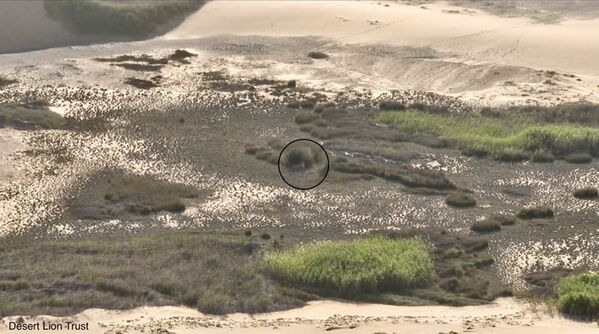
Xpl-108 spotted from the top of a high dune-crest.
4 January 2023
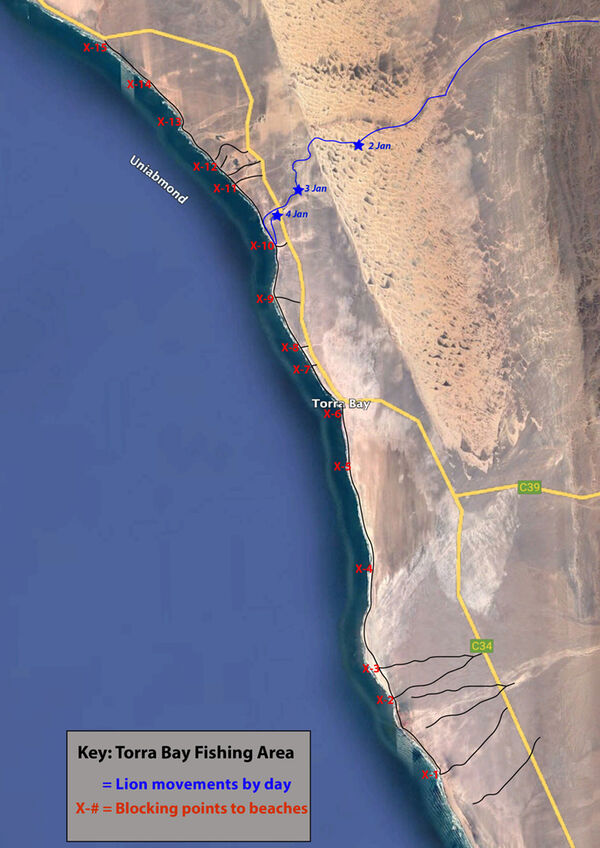
During the early morning hours Xpl-108 crossed the dune-belt and rested at a small spring in the Uniab Delta. She spotted a small herd of springbok and started hunting them. She was unlucky not to capture one in the thick vegetation.
Xpl-108 hunting a herd of springbok and almost succeeded.
At sunset the lioness moved directly to the ocean. MEFT and DLCT collaborated in ensuring that anglers had vacated the beaches and the lioness was allowed to go about her activities without disturbance. She captured a seal during the twilight period and dragged the seal to a nearby reed-bed where she spent the rest of the night, supervised by Dr Stander who could record rare behavior datas. MEFT and Desert Lion team member Felix visited the campers at Torra to inform them.
Xpl-108 approaching the beach and capturing a seal.
Hoanib Floodplain Pride
On 31 Dec 2022 the two Orphan lionesses left their two cubs near Oasis spring and moved down the coastline in search of Cape fur seals. They finally succeeded in catching a large sub-adult male seal near the mouth of the Hunkap river and just north of the Terrace Bay fishing area. Even though this was outside the legal fishing areas, several anglers were operating in the area and two vehicles attempted to turn off-road towards the lions. Strong strobe-lights were flashed as a “deterrent”, and the drivers fortunately abided.
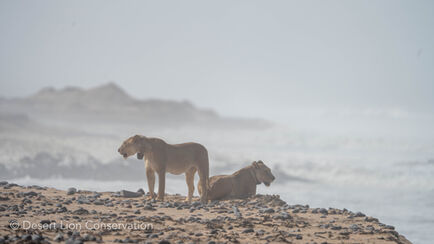
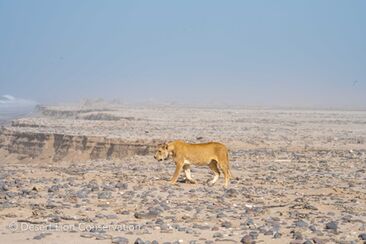
The two Floodplain lionesses (Xpl-106 & Xpl-109) north of Terrace Bay.
Time-lapse of collecting biological samples from the seal carcass.
Black Harrier
After an absent of approximately five years, the first Black harrier was spotted in the Uniab dunes. The bird, of late juvenile plumage, was hunting amongst the dunes after sunset.
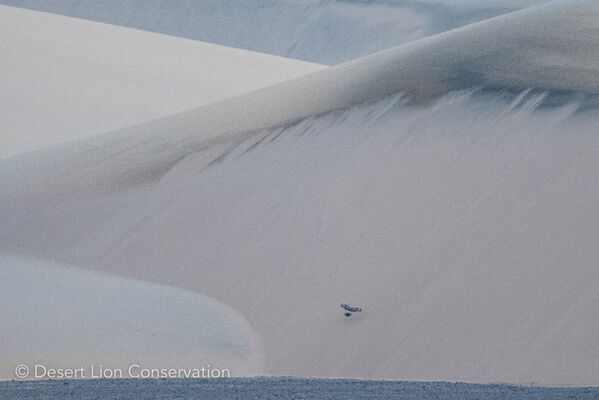
Black harrier in Uniab dunes after sunset.
Public Interest & the impact of tourism
Most visitors appear tolerant and interested in the lions; their respectful behavior and driving speaks to that. During the last few days in Torra Bay, local NWR and MEFT staff as well as fishermen and tourists enjoyed discussing with the Desert Lion team member Felix and asked many questions about the lion’s behavior and the Trust’s operations. The Desert Lion team will take turns in assisting the researcher Dr Stander, especially with public interactions.
A small minority of visitors, however, behave in a manner that causes damage to the environment, by driving off-road and leaving tracks, which spoil the beauty of the Skeleton Coast National Park. Visitors driving towards animals (such as the lions) or getting out of their vehicles results in disturbance to these creatures.
Tourist vehicles causing disturbance to environment and animals
Ministry vehicle monitoring lion without causing disturbance
The researcher values short interactions with interested visitors, allowing him to learn about their understanding and views on the lions, and to share with the visitors some of the interesting aspect of his research and activities. However, the researcher often has to park away from the road to optimise observation of the lions. In these cases, visitors are requested not to drive to the research vehicle, unless invited to do so.
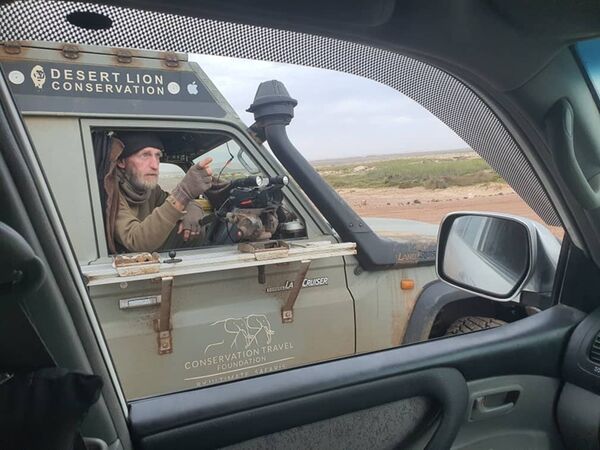
Tourist talking to Lion research vehicle.
